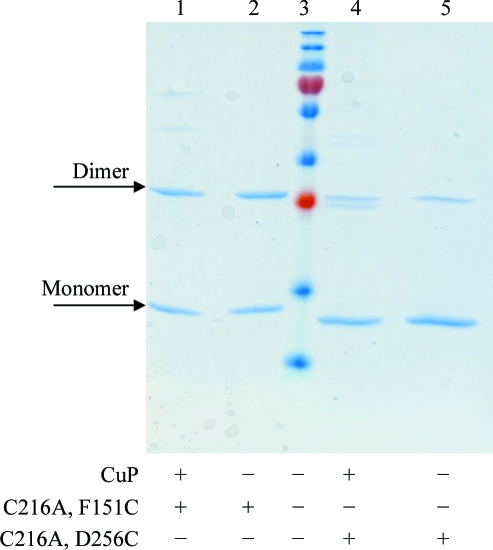Figure 3.
T-ag OBD double mutants primarily form dimers. Results of Cu(1,10-phenanthroline)2SO4 (CuP) catalyzed oxidation experiments electrophoresed on an SDS-polyacrylamide gel and stained with Coomassie Brilliant Blue. Lane 3 contains molecular-weight markers (250, 150, 100, 75, 50, 37, 25, 20, 15 and 10 kDa). Lanes 1–2 show C216A, F151C mutant OBD and lanes 4–5 show C216A, D256C mutant protein. Lanes 1 and 4 show the results of CuP oxidation and lanes 2 and 5 show the results of overnight dialysis in reaction buffer (no reducing agent). These data show that under oxidizing conditions the double mutants form dimers, unlike the single C216A mutant.

